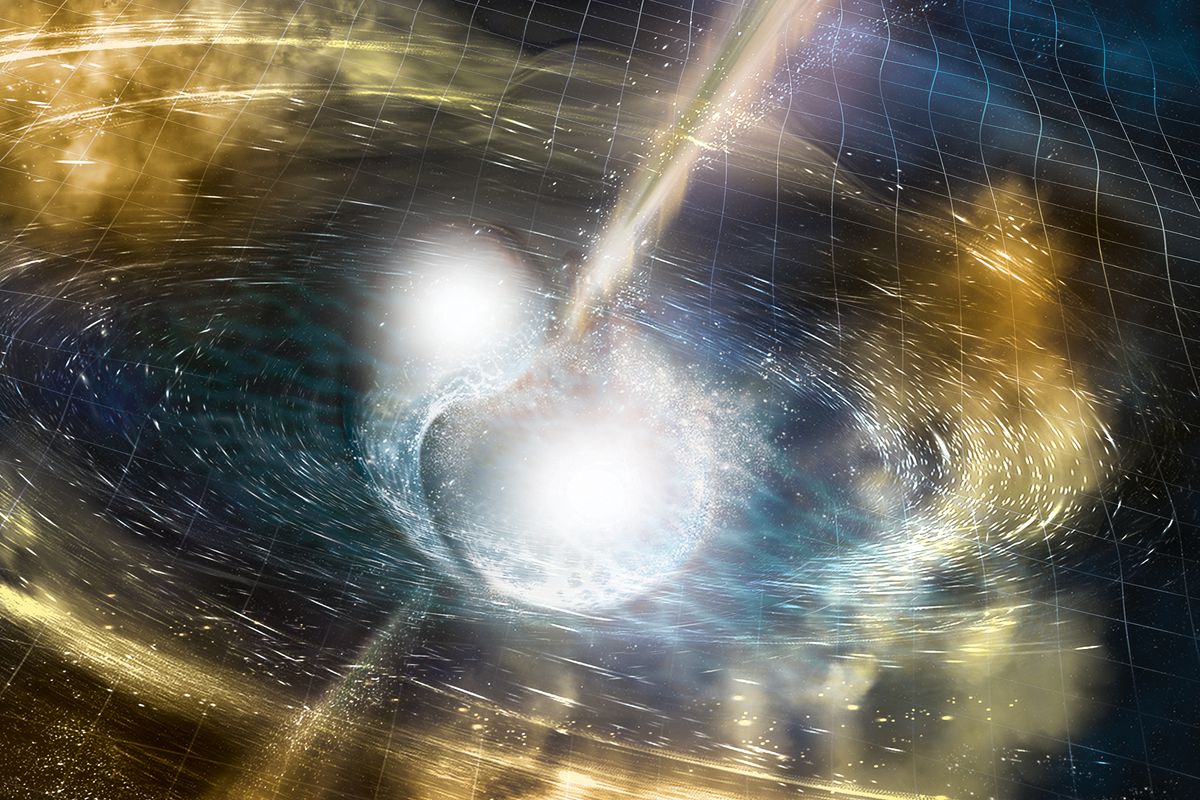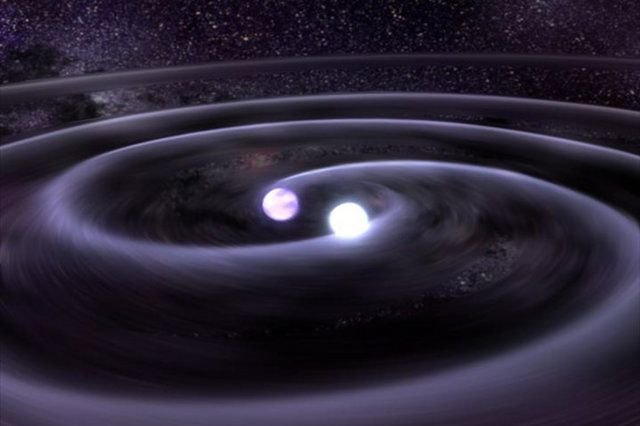Gravitational Waves

Neutron stars are objects of such mind-boggling mass that just a teaspoon of one weighs over a million tonnes! A neutron star is one step below a black hole, so it is evident that the amount of energy they exert on the local universe is nothing short of phenomenal. Attraction and repulsion operate on an extremely delicate balance from one another; two vehicles collide at the same speed after travelling the same distance causes a colossal crunch but also expels a vast amount of debris in chaos throughout the locality. Two cars smash into one another, and the momentum propels the cars together, melding into one chaotic shape, fevered velocity decimating order, entropy in its most frenetic state. Also, the wreckage flies out as it loosens from the even model it once inhabited, spraying carnage into the wider space, leaving jetsam remnants infecting the environment, perhaps injuring nearby objects or bodies.
So picture this collision playing out with two dense stars hitting one another and morphing into one, sending aftershocks across the cosmos? Not only did Albert Einstein theorise such an instance more than a century ago when he changed the world of physics when he developed the theories of Special and General Relativity, but cosmologists have also measured their existence, proving Einstein’s prescience endures long after his passing. Last year, the Laser Interferometer Gravitational-wave Observatory (LIGO) based in Benton County in the State of Washington, confirmed they had spotted gravitational waves from colliding black holes, but this year, it went one better. LIGO now has provided photographic evidence of gravitational waves courtesy of Einstein’s other old friend, light, by capturing the image of colliding neutron stars 130 million years ago. The detection further showed evidence through spectral measurements that the collision enabled heavy elements like gold and platinum to form.

The ripples of gravity are likely pivotal in the balance and substance of the universe as we know it; possibly the entire composition of reality hinges on mass and gravitational waves. Cosmologists already think that the speed of the universe’s expansion and whether or not gravity constricts space-time is reliant on Dark Energy. But is the rate of Dark Energy expansion dependent upon gravitational waves in a universe that has the right balance of particles in it, mixed with correct numbers of matter versus antimatter? Perhaps there lies a precarious mixture that means early in the universe’s life, collisions of nascent celestial bodies caused sufficient gravitational waves that fluctuated space-time, creating plenty of room for planets, stars and galaxies to form? Conversely, working with Dark Energy, does gravitational waves allow for the cosmos to disperse and avoid a heat death of frozen waste, permitting matter to deposit elsewhere? All of these mysteries lie with LIGO!
If you like my writing, please consider donating to my Patreon: https://www.patreon.com/bradjames
Or throw me a dollar via PayPal: https://www.paypal.me/BradleyYellop